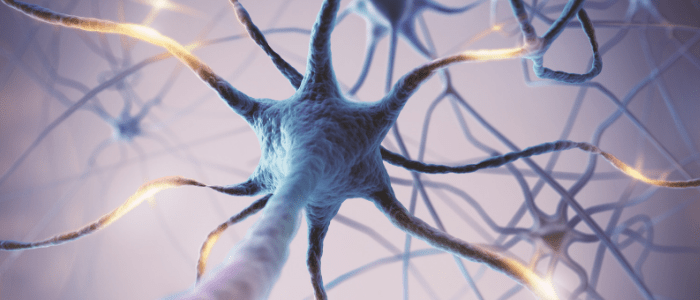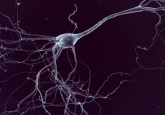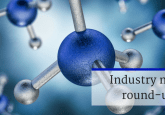Conquering the next mountain in spinal muscular atrophy

Important information
The following feature is intended for healthcare professionals only. Please tick the box below to confirm that you are a healthcare professional.
Marta Valente, Global Medical Leader for Neuromuscular Disease at Biogen shares her perspective on the remarkable progress that has been made in treating spinal muscular atrophy (SMA), and five key focuses for the future.
“While standing on top of Everest, I looked across the valley, towards the other great peak, Makalu, and mentally worked out a route about how it could be climbed.”
This quote is from the great Sir Edmund Hillary about his thoughts as he and Tenzing Norgay stood on top of the world having become the first people to scale Mount Everest in 1953. It shows that even someone who conquered the most difficult of challenges and pioneered new paths for others to follow, was still always looking to the future, towards the next great accomplishment.
I think this kind of mindset is very relevant and inspiring for the SMA community. We have come so far, made so much incredible progress, that in many ways it feels as though we have scaled our own Everest in recent years. But we must continue looking to the future, to the next mountains that loom, and find a way to scale those too.
But let’s pause and reflect for a moment on the peaks that we have managed to surmount so far. We don’t need to look very far into the past to see how dramatically the life chances for a child born with SMA have changed. In 2015, an infant diagnosed with SMA would have had no treatment options available (outside of clinical trials) and those with the most severe form of the disease would typically not have lived to reach their second birthday. In September 2016, based on interim results from pivotal Phase III studies, Biogen submitted a new drug application for the first medicine to treat SMA. Approval was granted by the US FDA for widespread use in December 2016, followed by the EMA in 2017. Since then, two further disease modifying treatments have been approved, each with a different mode of action.
The scientific community that I am a proud member of is typically more comfortable using measured, sober language than superlatives, but hopefully I can be forgiven for asserting that the impact of these medical advances has been truly transformative for people living with SMA and their families. We now have a patient population that didn’t exist before. Children with infantile-onset SMA who are not just surviving but living active lives.
There has also been progress for older children and adults living with less severe forms of SMA. For these patients, the goal is typically to halt the progressive loss of motor functions, like the ability to use a keyboard, or wash independently. We are continuing to gather data from clinical trials and registries, which demonstrates that treatment can in fact slow or halt some of the loss in motor function that is characteristic of this disease.
For both patients with infantile-onset SMA and those with later-onset SMA, we are learning that the earlier they receive treatment, the better their outcomes [1,2]. By diagnosing and treating people before their symptoms begin, they have the best opportunity to live a fulfilling life.
Looking towards the next mountain range
OK great, so we’re atop Everest. But, to paraphrase Hillary, what about Makalu? What about all the other mountains that still need to be overcome?
Well, there is still no cure for SMA, possibly the most ambitious expedition of all. However, the great thing is, I believe, we’ve overcome the most challenging climb. My personal opinion is that the progress made in recent years has been the pivotal turning point in our fight against SMA. And from here, we can plan our paths through the other mountains with greater knowledge and insight.
When I look out at the SMA mountain range, these are the five key elements that I believe we need to conquer in the years ahead:
1) Understanding the long-term outlook for patients: We are still in the infancy of treatment for SMA. We have children who were diagnosed and began treatment pre-symptomatically that are meeting normal developmental milestones. Similarly, we have adults whose disease progression has been halted. What does the long-term future hold for these patients? We now have up to 7 years of data on patients being treated for SMA, and through our continuing investment in research we will continue to examine where these patients are thriving, and where unmet needs remain. This data will also help patients to balance the short-term and long-term impacts of their treatment choice.
2) Maximizing quality of life for SMA patients: We’re working closely with patient groups to understand what the priorities are for patients in optimizing their quality of life. What are the outcomes that really matter to patients and how can we ensure that these are reflected in our research and development programs? We know from patient surveys that there is high acceptance amongst patients for each of the current routes for drug administration [3]. We therefore believe that focusing on durable efficacy, in addition to building confidence through long-term safety data, will deliver the biggest impact for patients.
3) Finding the optimal treatment approach: We now have the luxury of several pharmacological treatments, in additional to supportive care, and considerably more knowledge in the area. This is fantastic process, but it raises new questions. If patients have an incomplete response from one therapy, can they benefit from switching to a different therapy? Is there benefit in combining the treatments? When should treatment be initiated for maximum benefit in adults? Can we get more benefit from using a higher dose? Which treatment option will offer the most durable efficacy over time? What are the adequate markers which can inform treatment decisions, by measuring disease activity and treatment response? How do we balance efficacy against safety, based on the available data we have? Will muscle-enhancing agents have a role in helping to restore muscle strength for patients? These are questions that we are working with the patient community to find answers to, through our ongoing clinical development program and disease registries.
4) Achieving true shared decision making: Each patient’s situation is unique, both in terms of their medical history and their treatment priorities. We now have three approved treatment options in the EU, so the question becomes how do patients, families and healthcare professionals make informed decisions about the treatment which is best suited to them? It is crucial that patients have realistic expectations for their treatment, and clinicians also need to ensure that they are listening to patients’ goals, and then following up on their progress against them. It is these patient-specific priorities, such as being able to sit at a table and eat lunch with a friend without getting tired, or being able to brush their teeth independently, or even being able to run faster, which will determine whether treatment has improved the patient’s quality of life.
5) Ensuring no one is left behind: Biogen provided urgent access to treatment via one of the largest early access programs in rare-disease history, and we have continued to work closely with governments and reimbursement agencies to expand access to treatment. However, a 2019 survey by SMA Europe patient found that within Europe, almost 70% of SMA patients were unable to access treatment, despite wanting it [3]. In the 2 years since this survey was carried out that number has come down, thanks to improved access conditions agreed by a number of reimbursement agencies, but there is clearly still work to be done until it reaches zero.
So, let us maintain that Sir Edmund Hillary mindset. Yes, the entire SMA community should be proud of what has been achieved so far. But let’s keep going, face the next challenges head on. At Biogen we are full of ambition to meet these challenges and look forward to continue working with the scientists, researchers and clinicians amongst you to further improve lives for people affected by SMA.

Marta Valente, PharmD, MBA is the Global Medical Head of Neuromuscular Diseases at Biogen, where she works to advance the understanding of SMA and the development of therapeutics that alter the natural course of the disease.
Sources:
- Finkel RS, Mercuri E, Darras BT et al. Nusinersen versus Sham Control in Infantile-Onset Spinal Muscular Atrophy. N Engl J Med. 377, 1723-1732 (2017).
- Mercuri E, Darras BT, Chiriboga CA et al. Nusinersen versus Sham Control in Later-Onset Spinal Muscular Atrophy. N Engl J Med. 378(7), 625-635 (2018).
- Gusset N, Stalens C, Stumpe E et al. Understanding European patient expectations towards current therapeutic development in spinal muscular atrophy. Neuromuscul Disord. 31(5), 419-430 (2021).
Disclaimer
The opinions expressed in this interview are those of the author and do not necessarily reflect the views of Neuro Central or Future Science Group.
In association with:






